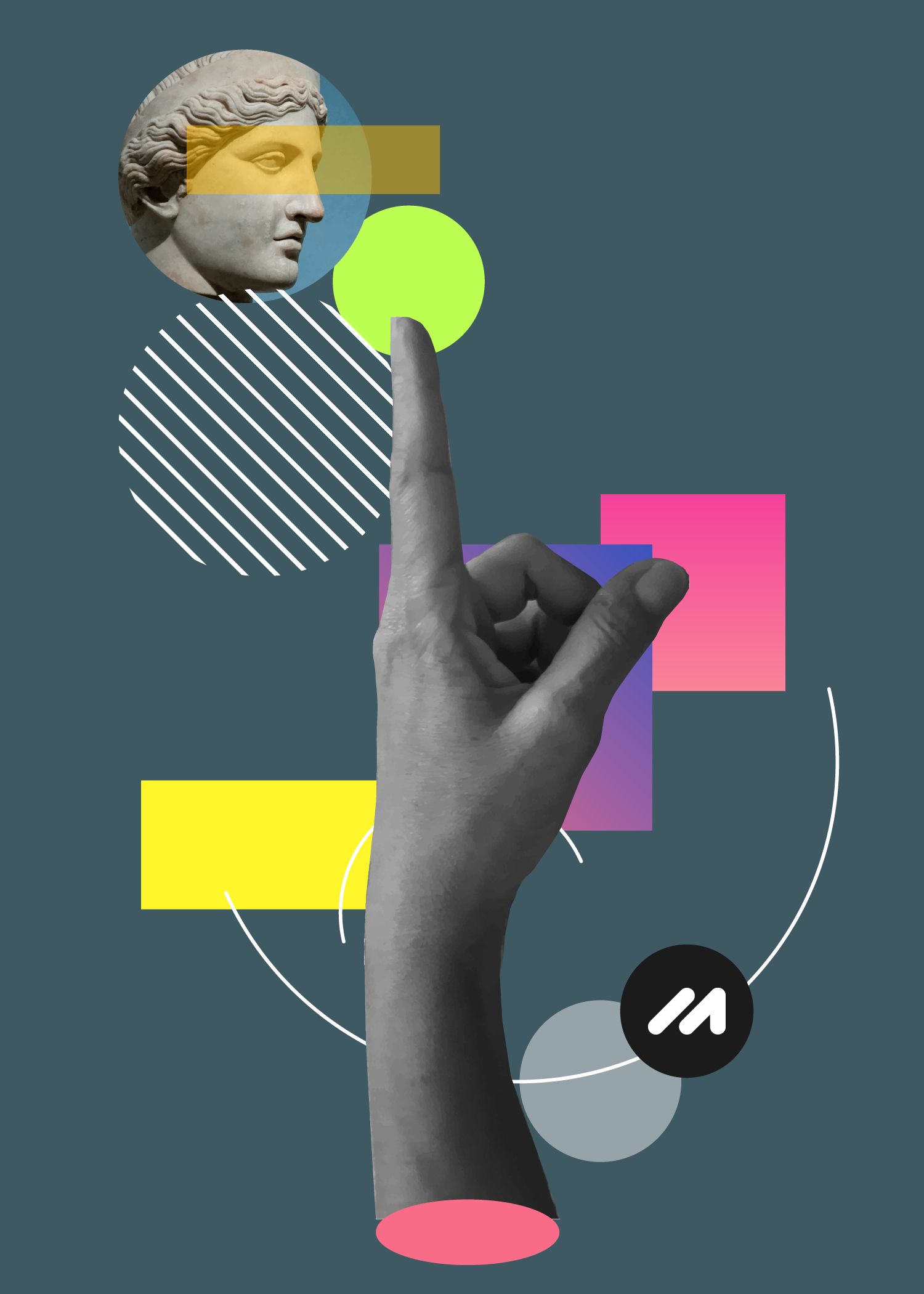In the digital age, standing out is a challenge. The online landscape is crowded, and brands are vying for attention.
Creative digital marketing is the key to differentiation. It's about more than just selling a product or service. It's about telling a story, sparking emotion, and engaging audiences in unique ways.
But how can you leverage creativity to elevate your brand? How can you use digital marketing to foster brand engagement and stand out from the crowd?
This article will explore these questions. We'll delve into the world of creative digital marketing, providing actionable insights and strategies to enhance your brand's online presence.
Whether you're a marketing professional, a business owner, or an entrepreneur, you'll find valuable tips and insights to help you navigate the digital marketing landscape creatively. Let's get started.
Understanding Creative Digital Marketing
Creative digital marketing is a blend of innovation and strategy. It involves using digital channels to promote a brand in a unique, engaging, and memorable way.
This approach goes beyond traditional marketing methods. It's not just about pushing a product or service. It's about creating a narrative, a brand story that resonates with your audience.
Creative digital marketing is about understanding your audience. It's about knowing their needs, desires, and pain points and crafting content that speaks directly to them.
It's about leveraging the power of digital platforms. From social media to email marketing, from SEO to content marketing, each platform offers unique opportunities for creativity.
In essence, creative digital marketing is about standing out. It's about being different, memorable, and making a lasting impression on your audience.
The Role of Creativity in Digital Marketing
Creativity is the lifeblood of digital marketing. It's what sets a brand apart in the crowded digital landscape.
In a world where consumers are bombarded with content, creativity is key. It's what grabs attention, sparks interest, and engages audiences.
Creativity in digital marketing is not just about being different. It's about being relevant, being authentic, and providing value.
It's about thinking outside the box, finding new ways to tell your brand story, engage your audience, and deliver your message.
Defining Your Brand's Creative Edge
Every brand has a unique story to tell. Your creative edge is what sets your brand apart. It's what makes your brand memorable.
Defining your brand's creative edge involves understanding your brand's core values. It's about knowing what your brand stands for, and how it resonates with your audience.
It's about identifying your unique selling proposition. What makes your brand different? What makes it better? What makes it worth choosing?
Your creative edge is also about your brand's personality. It's about the tone of voice, the visual elements, and the overall brand experience.
In essence, your brand's creative edge is what makes your brand, your brand. It's what sets you apart in the digital landscape.
Strategies for Boosting Brand Engagement
Brand engagement is a key metric in digital marketing. It measures the level of interaction between a brand and its audience.
High brand engagement means your audience is actively interacting with your content. They're liking, sharing, commenting, and clicking on your posts.
There are several strategies to boost brand engagement. Here are a few:
- Create engaging content: This includes blog posts, videos, infographics, and more. The more engaging your content, the more likely your audience is to interact with it.
- Encourage user-generated content: This can be as simple as asking your audience to share their experiences with your brand.
- Use social media: Social media platforms are a great way to interact with your audience. You can use them to share content, respond to comments, and engage in conversations.
- Personalize your content: Tailoring your content to your audience's needs and interests can significantly increase engagement.
Leveraging Visual Content for Higher Engagement
Visual content is a powerful tool in digital marketing. It's more engaging, more memorable, and more shareable than text-based content.
Images, infographics, videos, and animations can all boost engagement by making your content more appealing and digestible.
Visual content can also help convey complex information. Infographics, for example, can simplify complex data and make it easier to understand.
The Power of Social Media in Creative Campaigns
Social media is a powerful platform for creative digital marketing. It allows brands to interact directly with their audience.
Platforms like Facebook, Instagram, and Twitter offer unique opportunities for creativity. Brands can use these platforms to share engaging content, run creative campaigns, and foster community.
Social media also allows for real-time engagement. Brands can respond to comments, answer questions, and engage in conversations in real time.
Personalization: Tailoring Content to Your Audience
Personalization is a key strategy in creative digital marketing. It involves tailoring your content to your audience's needs, interests, and preferences.
Personalized content is more relevant, more engaging, and more likely to drive action. It shows your audience that you understand them, that you value them, and that you're willing to go the extra mile to meet their needs.
Personalization can take many forms. It can be as simple as using your audience's name in an email, or as complex as using data to deliver personalized content recommendations.
Implementing Digital Marketing Creatives
Implementing digital marketing creatives is a crucial step in your marketing strategy. It involves creating and using visual, textual, and interactive elements to engage your audience.
The first step is to understand your audience. Knowing their needs, interests, and preferences can help you create content that resonates with them.
Next, brainstorm ideas for creative content. This could be anything from blog posts and infographics to videos and interactive quizzes.
Once you have your ideas, it's time to create your content. Use high-quality images, engaging copy, and interactive elements to make your content as engaging as possible.
Finally, distribute your content. Share it on your website, social media platforms, email newsletters, and any other channels your audience uses.
Storytelling and Brand Narrative
Storytelling is a powerful tool in digital marketing. It allows you to connect with your audience on an emotional level.
A strong brand narrative can set you apart from your competitors. It can help you build a strong brand identity and foster loyalty among your audience.
Your brand narrative should be consistent across all your marketing channels. It should reflect your brand's values, mission, and personality.
Remember, a good story is engaging, relatable, and memorable. It should resonate with your audience and inspire them to take action.
Interactive and User-Generated Content
Interactive content is a great way to engage your audience. It encourages them to interact with your brand, increasing engagement and retention.
Interactive content can take many forms. It could be a quiz, a game, a survey, or an interactive infographic.
User-generated content is another powerful tool. It involves encouraging your audience to create and share content about your brand.
This could be anything from customer reviews and testimonials to photos and videos of your products in use. User-generated content is authentic, relatable, and highly trusted by consumers.
Embracing New Technologies and Platforms
The digital marketing landscape is constantly evolving. New technologies and platforms are emerging all the time, offering new opportunities for creative marketing.
Augmented reality (AR), virtual reality (VR), and artificial intelligence (AI) are just a few examples. These technologies can offer immersive, interactive experiences that engage your audience in new ways.
Similarly, new platforms can offer new opportunities for reaching your audience. TikTok, for example, has exploded in popularity in recent years, offering a new platform for creative, short-form video content.
Staying up-to-date with these trends and embracing new technologies and platforms can help you stay ahead of the curve in your digital marketing efforts.
Measuring the Impact of Creative Digital Marketing
Measuring the impact of your creative digital marketing efforts is crucial. It helps you understand what's working and what's not.
There are several ways to measure the impact of your marketing efforts. These include tracking website traffic, social media engagement, and conversion rates.
Website traffic can give you an idea of how many people are visiting your site. It can also show you where they're coming from, which can help you understand which of your marketing efforts are driving the most traffic.
Social media engagement can show you how people are interacting with your content. Likes, shares, comments, and follows can all indicate how engaged your audience is.
Conversion rates can show you how many people are taking the desired action. This could be making a purchase, signing up for a newsletter, or filling out a contact form.
Analytics and Performance Metrics
Analytics and performance metrics are key to measuring the success of your digital marketing efforts. They provide data that can help you make informed decisions.
Google Analytics is a powerful tool for tracking website traffic. It can show you how many people are visiting your site, where they're coming from, and what they're doing once they're there.
Social media platforms also provide analytics. These can show you how many people are seeing your posts, how they're interacting with them, and how many are clicking through to your website.
Email marketing platforms also provide analytics. These can show you how many people are opening your emails, clicking on links, and taking the desired action.
Remember, the key to using analytics effectively is to set clear, measurable goals. This will give you a benchmark to measure your performance against.
Case Studies: Creative Campaigns That Worked
Case studies can provide valuable insights into what works in creative digital marketing. They can show you real-world examples of successful campaigns.
For example, consider the "Share a Coke" campaign by Coca-Cola. This campaign involved printing popular names on Coke bottles and encouraging people to share a Coke with someone whose name was on the bottle.
This campaign was hugely successful. It increased Coca-Cola's U.S. sales by more than 2% and generated a significant amount of user-generated content.
Another example is the "Like a Girl" campaign by Always. This campaign challenged gender stereotypes and encouraged girls to embrace their strength.
The campaign was a huge success. It generated over 90 million views on YouTube and increased Always' brand equity by a significant margin.
These case studies show that creative, engaging, and emotionally resonant campaigns can have a significant impact on brand engagement and sales.
Best Practices for Creative Digital Marketing
Creative digital marketing is an art. But it's also a science. It requires a balance of creativity and strategic thinking.
One of the best practices is to always keep your audience in mind. Understand their needs, interests, and pain points. This will help you create content that resonates with them.
Another best practice is to be consistent. Consistency in your messaging, visual elements, and tone of voice can help build a strong brand identity.
It's also important to test and measure your efforts. This can help you understand what's working and what's not. And it can guide your future marketing efforts.
Here are a few more best practices to consider:
- Use a variety of content types (e.g., blog posts, videos, infographics)
- Leverage social media platforms to reach a wider audience
- Use SEO to increase your visibility in search engine results
- Collaborate with influencers to expand your reach
- Stay updated with the latest digital marketing trends and technologies
Aligning Creativity with Business Objectives
Creativity is important in digital marketing. But it's equally important to align your creative efforts with your business objectives.
Start by defining your business objectives. Are you looking to increase brand awareness? Drive more traffic to your website? Increase sales? Once you've defined your objectives, you can start brainstorming creative ways to achieve them.
For example, if your objective is to increase brand awareness, you might consider launching a social media campaign. You could create engaging content that encourages users to share and interact with your brand.
If your objective is to increase sales, you might consider creating a series of product videos. These could highlight the features and benefits of your products and encourage viewers to make a purchase.
Remember, creativity and strategy should go hand in hand. Your creative efforts should always support your business objectives.
Continuous Learning and Adaptation
The digital marketing landscape is constantly evolving. New platforms, technologies, and trends emerge all the time. To stay competitive, you need to be willing to learn and adapt.
Stay updated with the latest digital marketing trends. Attend webinars, read industry blogs, and follow thought leaders on social media.
Don't be afraid to experiment with new platforms and technologies. They could provide new opportunities to reach and engage your audience.
And remember, failure is a part of the learning process. If a campaign doesn't perform as expected, analyze the results, learn from the experience, and apply those learnings to your future efforts.
In the world of creative digital marketing, continuous learning and adaptation are key to success.
Conclusion: The Future of Creative Digital Marketing
The future of creative digital marketing is bright. As technology continues to evolve, so too will the ways in which brands can engage with their audiences.
Innovations like augmented reality, artificial intelligence, and voice search are already changing the landscape. Brands that can leverage these technologies creatively will have a competitive edge.
But no matter how much technology changes, the fundamentals of creative digital marketing will remain the same. Understanding your audience, delivering valuable content, and measuring your results will always be key.
Key Takeaways
In conclusion, creative digital marketing is a powerful tool for elevating your brand. It can help you stand out in a crowded digital landscape, engage with your audience, and achieve your business goals.
Here are the key takeaways from this article:
- Understand your audience and tailor your content to their needs
- Be consistent in your messaging and visual elements
- Test and measure your efforts to understand what's working
- Align your creative efforts with your business objectives
Stay updated with the latest digital marketing trends and technologies
Be willing to learn and adapt in a constantly evolving landscape
Remember, creativity is not just about being different. It's about delivering value in a way that's unique to your brand.


